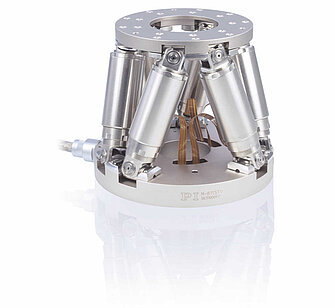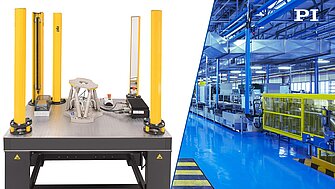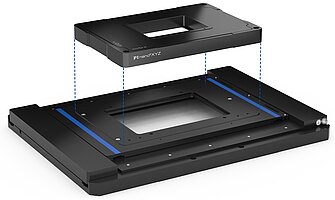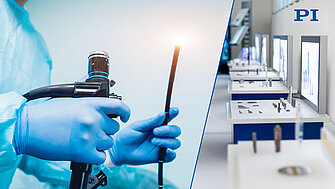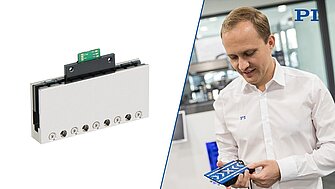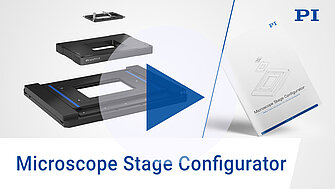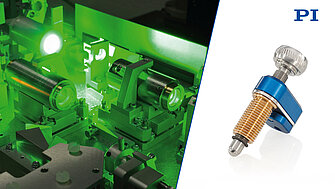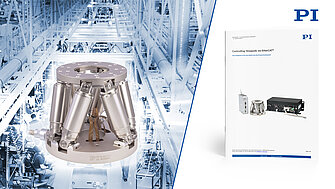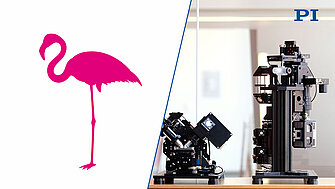What can you use hexapods for? A common application is the rapid and accurate alignment of two components in six degrees of freedom during an automated production process, for instance, a printed circuit board (PCB) and a lens, or a PCB and a charge-coupled device.
Learn moreCategory: Product
Some Like it Hot
How PI Is Helping to Unlock the Sun's Secrets
· Arne Bramigk· Markus Wiederspahn
The Solar Orbiter space probe begun its journey in February 2020. Also on board: A tip/tilt unit from PI for the secondary mirror of one of the central experiments, the Polarimetric and Helioseismic Imager (PHI).
Learn moreHow an Industrial Safety Concept Can Be Combined with a Hexapod
Finger, hand, or body protection in automated production processes
· Doris Knauer
The integration of a barrier-free safety concept into the control circuit of the hexapod, e.g. of a PILZ safety light curtain, ensures finger, hand, and body protection depending on the required safety level.
Learn moreOpen Source Microscopy Supports Groundbreaking Discoveries
We help researchers around the globe to integrate high quality motion and positioning systems into their research, providing reproducible results and enabling innovative techniques such as 3D, 4D, light sheet and total internal reflection fluorescence (TIRF) microscopy.
Learn morePiezo Ceramic Components in Medical Technology
· PI (Physik Instrumente) Ltd.
On the 17th of March 2020 piezo experts from research and industry will come together in Cranfield to discuss Piezo Ceramic Applications in the Medical World at the PI UK Ceramic Academy.
Learn morePIMag®: Voice Coil, Linear, and Torque Motors Developed In-House
An Interview Gives Insight Why PI also Uses Its Own Motors to Offer Optimized Customer Solutions
· Doris Knauer
For positioning and scanning systems equipped with magnetic direct drives, PI relies mainly on strong suppliers from the motor industry. With the Driven by PIMag® brand name PI is increasingly strengthening its expertise in motor design, construction, and manufacturing. Dietrich Wins, Product Marketing Manager for Motorized Positioners at PI, explains the motivation behind.
Learn moreSystem Overview: Positioning Stages for Inverse Microscopy
Guide for the Perfect Combination of Positioning Stages, Z Stages, and Sample Holders
· Markus Wiederspahn
Positioning samples under the microscope is a complex task for which PI offers numerous products. In order to fulfill the demands placed on the positioning accuracy, travel ranges and velocities, stages that offer long travel ranges are often combined with fine positioning stages. Which systems fit together how, is shown in the system overview for inverse microscopes.
Learn moreStable and Precise Positioning of Mechanical and Optomechanical Components
Piezo-Based Linear Actuators Provide Reliable and Automated Alignment of the Beam Path of Optical Assemblies
· Doris Knauer
How can the beam path of optical assemblies be adjusted with high resolution and stability? Piezo-based linear actuators provide reliable and automated alignment of mechanical and optomechanical components in experiments They offer a lifetime of more than a billion steps, a step size of 20 nm and a holding force of > 100 N.
Learn moreHow can the advantages of hexapods be easily used in automation?
Learn in the white paper "Controlling hexapods via EtherCAT®" how integration into the process environment works
· Doris Knauer
Parallel-kinematic hexapod robots can move and position tools, workpieces, and complex components with weights ranging from a few grams to several hundred kilograms or even several tons in any spatial orientation with high precision. The PI hexapod controller with integrated EtherCAT interface now makes it very easy for users to integrate hexapods into automation systems without it being necessary to perform challenging kinematic transformations.
Learn moreFlamingo Light Sheet Microscopes Rely on Drives from PI
Precise Sample Positioning is Crucial for Conclusive Images
· Markus Wiederspahn· Dr. Thomas Bocher
Lightsheet microscopy (LSFM) is a powerful platform for in vivo imaging offering low phototoxicity and fast image acquisition. The Flamingo project from Professor Dr. Jan Huisken, Research Group Leader and Director of the Medical Engineering Department at Morgridge Institute for Research in Madison, WI, aims to make this technology easily available to researchers.
Learn more